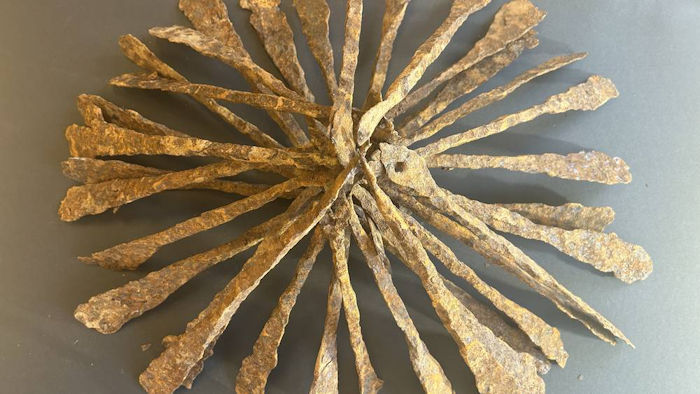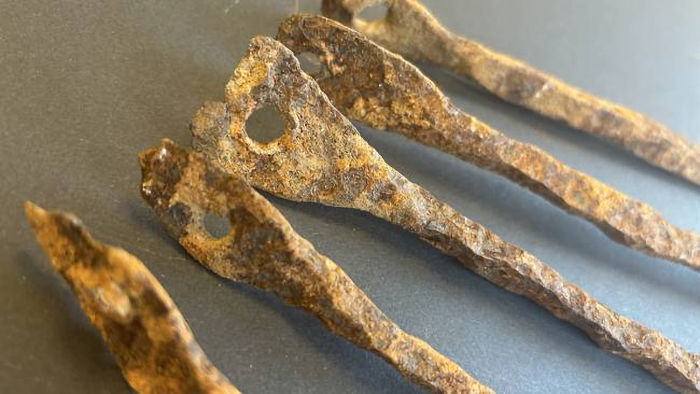Jan Bartek – AncientPages.com – You never know when and where you’ll find something of archaeological value do you? Some people can come across priceless ancient treasures without searching for them. This is what happened to a woman in Norway.
While cleaning her parents’ house, Grete Margot Sørum in Valdres, southern Norway discovered as many as 32 iron ingots from the Viking Age or the early Middle Ages!

Perhaps a thousand years ago, someone decided to hide bury and hide these iron ingots with the intention of using them later? Image credit: Mildri Een Eide, Innlandet County Municipality.
The bars had been there since they were found in the 1980s, reports NRK. The iron ingots contribute to knowledge about the history of this region.
During the Viking Age iron was of special importance and used used for weapons and rivets for boat building. Scientists have discovered most Viking era iron was smelted from bog iron. Valdres stands out with a particularly large iron production which explains why Sørum’s father found the in Aurdal in Valdres.
“It is strange to think that a large trade took place along this road more than 1,000 years ago. And that some may have roughed up the bars to take care of them right here,” Sørum told the NRK.
The Viking Age iron bars are all the same shape and size and weigh approximately grams which suggests they were most likely used as payment.
At the end, the narrow objects have a hole.
“This indicates that they have been tied together in a bundle,” says archaeologist at Mildri Een Eide County Archaeologist in Innlandet.

The Viking Age iron ingots were used as money. Image credit: Mildri Een Eide, Innlandet County Municipality.
According to the Innlandet County Municipality, Sørum arranged for the iron ingots to be delivered to Valdres Folkemuseum in Fagernes. The museum forwarded the find to the Cultural Heritage Section in the county municipality.
“We have now delivered the iron ingots to the Cultural History Museum in Oslo, which catalogs and stores artefact finds.
Eventually, the finder receives a letter of thanks and the information about the find becomes available through the Unimusportalen.
This makes the iron ingots available both for future research and dissemination,” the ICM informs.
See also: More Archaeology News
Old finds that are handed in to the archaeologists provide new knowledge about the history of the Inland, so a big thank you to Grete Margot Sørum, says Anne Engesveen who is unit leader for archeology at the Cultural Heritage Section.
Written by Jan Bartek – AncientPages.com Staff Writer





